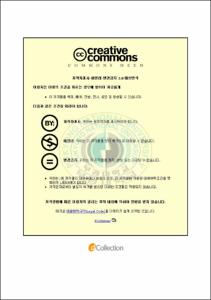협동학습구조를 적용한 초등학생의 진로교육프로그램 개발 및 적용 효과 분석
- Alternative Title
- Analysis of the Effects of a Career Education Program Based on the Structure of Cooperative Learning for Elementary Students
- Abstract
- The objective of the present study was to develop a career education program based on the structure of cooperative learning and examine its effects on elementary students' career development. For this purpose, we conducted research tasks as follows.
First, develop a career education program based on the structure of cooperative learning for elementary students' career development.
Second, examine the effects of the career education program based on the structure of cooperative learning on elementary students' career development.
1) Test the post effect and continuous effect of the career education program on elementary students' development of self-awareness.
2) Test the post effect and continuous effect of the career education program on elementary students' development of academic and career search abilities.
3) Test the post effect and continuous effect of the career education program on elementary students' development of career planning abilities.
The subjects of this study were two 6th-grade classes at D Elementary School in Busan, which were divided into an experimental group and a control group, and pretest-posttest control group design was adopted. The measuring tool used in this study was 'Career Development Scale for Elementary Students' developed by Lee Jong-beom (2005). We developed and refined a career education program based on the structure of cooperative learning, and applied the program to the experimental group through 1~2 sessions per week and a total of 14 sessions for 8 weeks.
In order to examine the effects of the program, statistical analyses were made using SPSS 12.0. Independent sample t-test was performed to see the significance of differences between the control group and the experimental group using the mean values of the pretest, the posttest, and follow-up observation of continuous effect. In addition, content analysis was made using the students' writings during the program activities.
The results of this study are as follows.
First, difference in self-awareness between the two groups was not statistically significant in the post test, but was statistically significant in the follow-up observation of continuous effect. According to the results of analyzing the contents of writings, the children in the experimental group showed improvement in their understanding and consideration of others as well as in confidence and active attitude through cooperative activities. They also showed continuous interest in their career.
Second, difference in academic and career development between the two groups was not statistically significant in the post test and in the follow-up observation of continuous effect, but according to the results of analyzing the contents of writings, the children in the experimental group showed a high level of career consciousness and made clear resolutions to prepare for their career life.
Third, difference in career planning between the two groups was statistically significant in the post test and in the follow-up observation of continuous effect, and according to the results of analyzing the contents of writings, the children in the experimental group resolved to plan specific career plans and to do necessary preparations and efforts continuously.
- Issued Date
- 2008
- Awarded Date
- 2008. 8
- Type
- Dissertation
- Publisher
- 부경대학교 교육대학원
- Alternative Author(s)
- Kim, Sung Ran
- Affiliation
- 부경대학교 교육대학원
- Department
- 교육대학원 교육심리전공
- Table Of Contents
- 표목차 = ⅱ
그림목차 = ⅲ
Abstract = ⅳ
Ⅰ. 서론 = 1
1. 연구의 필요성과 목적 = 1
2. 연구 내용 = 5
3. 용어의 정의 = 5
Ⅱ. 이론적 배경 = 7
1. 초등학생 진로발달 = 7
2. 협동학습구조 = 17
3. 초등학교에서의 진로교육 = 23
Ⅲ. 협동학습구조를 적용한 진로교육프로그램 개발 = 30
1. 프로그램 개발의 기본 방향 = 30
2. 프로그램의 목적 = 27
3. 프로그램의 내용 및 방법 = 32
4. 프로그램 예시 = 39
Ⅳ. 협동학습구조를 적용한 진로교육프로그램의 효과 검증 = 41
1. 연구 방법 = 41
2. 연구 결과 = 44
Ⅴ. 논의 및 결론 = 60
1. 논의 = 60
2. 결론 = 62
참고문헌 = 65
부록1 협동학습구조를 적용한 진로교육프로그램 = 69
부록2 초등학생용 진로발달 검사 도구 = 83
- Degree
- Master
- Files in This Item:
-
-
Download
 협동학습구조를 적용한 초등학생의 진로교육프로그램 개발 및 적용 효과 분석.pdf
기타 데이터 / 929.81 kB / Adobe PDF
협동학습구조를 적용한 초등학생의 진로교육프로그램 개발 및 적용 효과 분석.pdf
기타 데이터 / 929.81 kB / Adobe PDF
-
Items in Repository are protected by copyright, with all rights reserved, unless otherwise indicated.